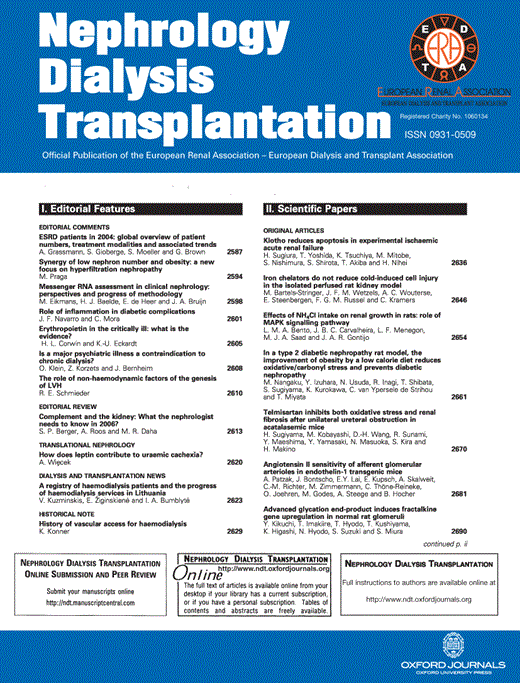-
PDF
- Split View
-
Views
-
Cite
Cite
Javier Navarro‐Antolin, Santiago Lamas, Nitrosative stress by cyclosporin A in the endothelium: studies with the NO‐sensitive probe diaminofluorescein‐2/diacetate using flow cytometry, Nephrology Dialysis Transplantation, Volume 16, Issue suppl_1, May 2001, Pages 6–9, https://doi.org/10.1093/ndt/16.suppl_1.6
Close - Share Icon Share
Abstract
Background. We have reported previously that exposure of endothelial cells to cyclosporin A (CsA) may result in the regulation of specific genes, such as the endothelial nitric oxide synthase. In the context of endothelial toxicity, whether this represents an adaptive response to injury at the physiological level or contributes further to the generation of nitrosative stress remains to be investigated. The precise reactive species potentially produced by CsA and their capacity to modify proteins functionally are not well known.
Methods. We assessed the possibility of detecting intracellular nitric oxide (NO) by flow cytometry with the cell‐permeable probe diaminofluorescein‐2 diacetate (DAF‐2/DA).
Results. CsA increased the intracellular 2 h accumulation of DAF‐2T, the oxidized form of DAF‐2/DA, in an l‐NAME‐sensitive process. When CsA was re‐added for 2 h to bovine aortic endothelial cells previously pre‐incubated with CsA for 16 h, an additional increase in the accumulation of DAF‐2T was achieved.
Conclusions. In this work, we provide data showing that intracellular NO can be detected by flow cytometry with DAF‐2/DA and suggesting two potential mechanisms (transcriptional and post‐translational) for the intracellular accumulation of NO in vascular endothelial cells exposed to the immunosuppressant CsA.
Correspondence and offprint requests to: Santiago Lamas, Centro de Investigaciones Biológicas, c/Velázquez 144, 28006 Madrid, Spain.





Comments